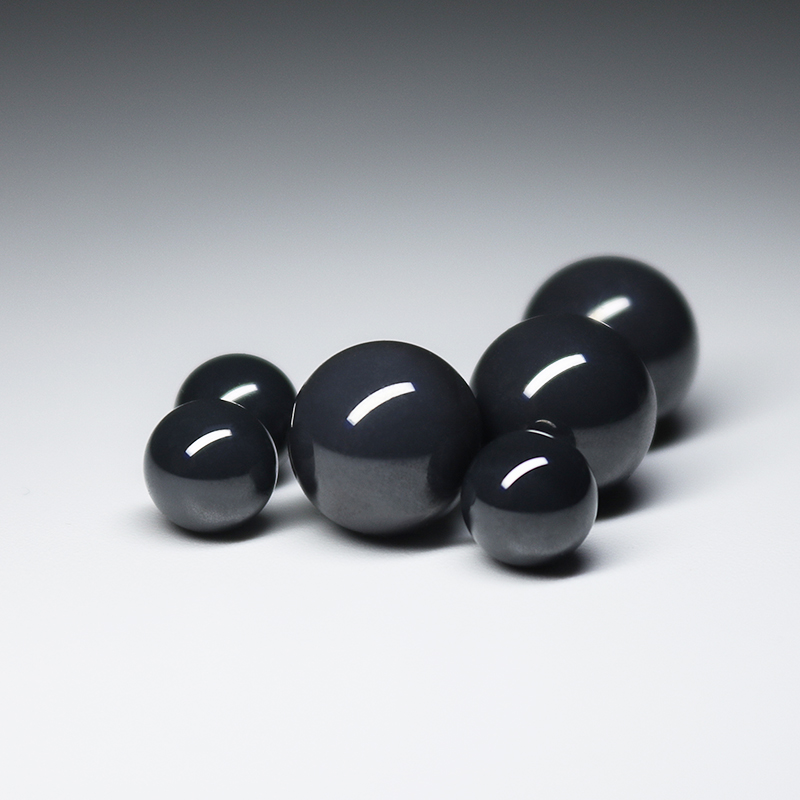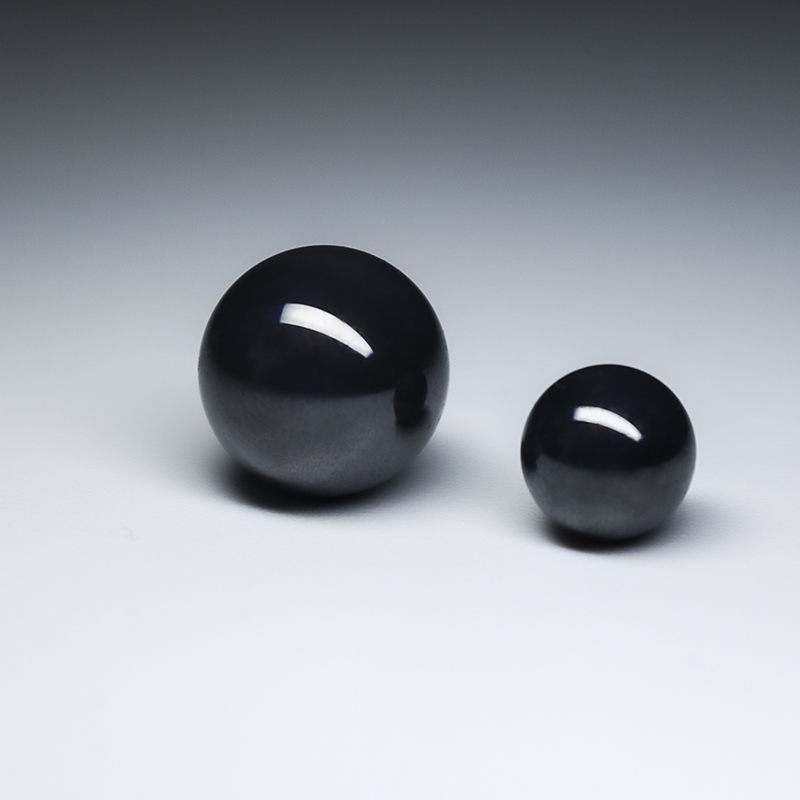

Ceramic ball
Ceramic balls are suitable for applications with high loads, high speeds and extreme temperatures. Their long life and very low lubrication requirements make them ideal for extreme applications. Ceramic is non-porous, non-magnetic, non-corrosive and lighter than steel. Ceramic balls are also harder than steel and because they are non-porous, they are virtually frictionless and rotate faster than steel balls.
Ceramic balls are typically made from the following materials:
Silicon Nitride (SiN4), Aluminium Oxide (Al2O3), Zirconium Oxide (ZrO2), Silicon Carbide (SiC).
Because ceramics have a glass-like surface, the coefficient of friction is extremely low, making them ideal for applications that require reduced friction. Ceramic balls require less lubrication and are harder than steel balls, which contributes to longer bearing life. Ceramic balls have better thermal properties than steel balls and therefore generate less heat at high speeds.
Step 1
Product Features
Superior Hardness and Wear Resistance
Alumina ceramics have a hardness of up to Hv 1600-1800, Silicon Nitride (Si₃N₄) is even higher, and the wear resistance is 5-10 times higher than that of metal balls.
Excellent corrosion resistance
Withstand strong acids, alkalis, salt solutions and organic solvents (such as hydrofluoric acid excepted), to avoid the corrosion problem of metal balls.
High temperature stability
Zirconia ceramics retain their strength at 800-1000°C, while silicon nitride can withstand temperatures above 1200°C. Low density and light weight.
Low density and light weight
Densities of 3.2-6.0 g/cm³ (7.8 g/cm³ for steel balls) reduce centrifugal forces at high rotational speeds.
Extremely low coefficient of friction
Silicon nitride ceramics have a coefficient of friction of only 0.05-0.1 (0.6-0.8 for steel balls), which reduces frictional heating and extends equipment life.
High roundness and dimensional stability
Roundness error ≤ 0.1μm after precision machining, low coefficient of thermal expansion (e.g. 6-8×10-⁶/°C for alumina), ensuring dimensional accuracy at high or low temperatures.
Alumina ceramics have a hardness of up to Hv 1600-1800, Silicon Nitride (Si₃N₄) is even higher, and the wear resistance is 5-10 times higher than that of metal balls.
Excellent corrosion resistance
Withstand strong acids, alkalis, salt solutions and organic solvents (such as hydrofluoric acid excepted), to avoid the corrosion problem of metal balls.
High temperature stability
Zirconia ceramics retain their strength at 800-1000°C, while silicon nitride can withstand temperatures above 1200°C. Low density and light weight.
Low density and light weight
Densities of 3.2-6.0 g/cm³ (7.8 g/cm³ for steel balls) reduce centrifugal forces at high rotational speeds.
Extremely low coefficient of friction
Silicon nitride ceramics have a coefficient of friction of only 0.05-0.1 (0.6-0.8 for steel balls), which reduces frictional heating and extends equipment life.
High roundness and dimensional stability
Roundness error ≤ 0.1μm after precision machining, low coefficient of thermal expansion (e.g. 6-8×10-⁶/°C for alumina), ensuring dimensional accuracy at high or low temperatures.
Step 2
Application Field
- Rolling bearings :For the manufacture of high-performance all-ceramic or hybrid ceramic bearings
- Valves and Pumps :critical seals and wear parts
- Grinding media: in ball mills, vibration mills, sand mills and other equipment, used for crushing, grinding, dispersing, mixing various materials.
- Precision Instruments and Measurements:Used as a probe (stylus ball) for precision measuring instruments, balls for precision guides, gyroscope rotors, balancing balls, etc.
